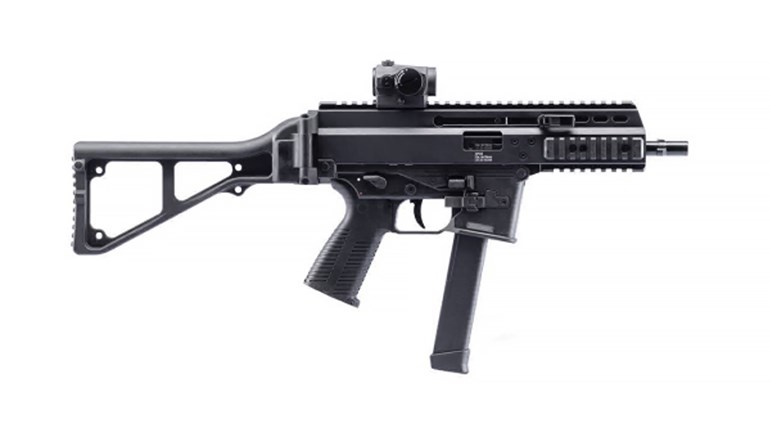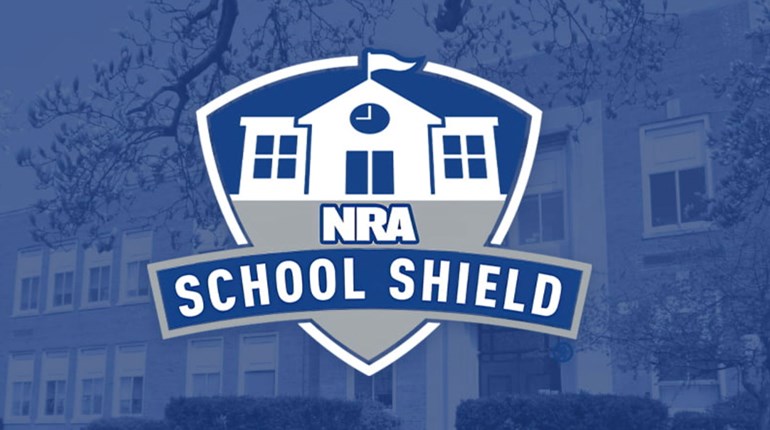
“We must do something!” After every horrific school shooting, so-called “mainstream” media, anti-gun politicians and self-righteous Hollywood celebrities raise the same cry to do something ... anything, to stop the slaughter of innocents. That “something,” of course, always turns out to be gun control. It matters not that such action has been taken in the past and, in fact, is still in effect in large swaths of the country; just as long as we do something, it doesn’t have to actually address the problem at hand.
“One of the greatest burdens you have in a leadership position is knowing you’ve done all you can to ensure that everyone is safe.”
Rosa Blackwell Superintendent (Ret.), Cincinnati Public Schools
It’s baffling that these powerful forces don’t leap at the chance to fund efforts that do make children safer—threat assessments and response strategies tailored by, and for, local school systems; efforts to identify risks long before they kick in the front door; partnerships with local law enforcement that harden schools and reduce response times; links with community organizations that can flag challenged youth; and training that empowers school administrators, boards, teachers, parents and cops to not only craft solutions specific to their situations, but to also train others to do the same.
Not one media conglomerate has funded such efforts on a national scale, despite the windfall of ad revenue created by their sensationalizing these rare shootings. Not one billionaire gun-banner has carved out a few dollars, of the millions earmarked to get anti-gun politicians elected, for school security. Not one obscenely wealthy Hollywood celebrity has tweeted an announcement of a nationwide grant program to aid schools in keeping our children safe.
In fact, only one organization involved in the national school safety conversation funds a nationwide effort to keep our school children safe. That’s the National Rifle Association, through its NRA School Shield program, provided free of charge to any community interested in making its schools more secure.
Starting this month, nearly 56 million American children will file into K-12 classrooms in more than 132,800 schools. In the evening, schools are focal points for sporting events, performances, club activities and transportation hubs. It’s estimated that one in six Americans will set foot onto a school campus every day. However, few of these schools will start the year prepared for the unthinkable.
NRA School Shield is funded from members, individual donors and foundations.
The NRA stepped into the gap between the need for increased security and the lack of resources in 2012. In the aftermath of the Sandy Hook tragedy, NRA Executive Vice President Wayne LaPierre announced the creation of a task force that would make recommendations to keep our schools safer. Heading the task force was Asa Hutchinson, former U.S attorney and congressman from Arkansas, now the state’s governor. The results of that task force became the foundation for the NRA School Shield program.
Through the program, the NRA sends a team of subject-matter experts to school systems. Their mission is not to tell them what they are doing wrong, or even to make recommendations. Neither is it their mission to arm teachers and staff, though that may be an effective strategy for a given situation.
Rather, their mission is to do what the NRA does better than anyone else: to train. NRA assessors spend five days on the school campus, always in conjunction with local law enforcement. During that time, up to 20 local officials receive training on how to conduct their own vulnerability assessments and develop appropriate response strategies. These groups include two to three people per agency to facilitate partnerships and multi-agency response relationships. They often include personnel from other school systems, jurisdictions or even states; these officials use their newfound skills to conduct assessments back home.
During the training, participants learn to determine the potential adversarial path when approaching a campus, probing for vulnerabilities beginning at the outer perimeter and working their way into the building. They assess physical security components, technology, personnel, school resource officers (SROS), incident management and response protocols. Groups learn to document and report their findings. It’s critical that this process takes place during school hours; otherwise, it’s impossible to predict mass gathering points and before- and after-school activity patterns.
At the end of 2017, 154 vulnerability assessments had been reported by program trainees. Over 250 assessors have been trained to date, and this fall 10 more classes will likely double that number.
None of the participating school systems, public or private, have been charged a penny for this effort. NRA School Shield is funded 100 percent by donations to the NRA from members, individual donors and foundations, in addition to the support from Friends of NRA.
Even more impressive is the fact that trainees can easily turn their vulnerability assessments into needs assessments for grant requests at the federal, state and local level. They can even use them to apply for grants from The NRA Foundation, which has distributed more than $800,000 to schools so far.
The NRA’s team of “subject-matter experts” is large and diverse, as a panel discussion at the 2018 NRA Annual Meetings & Exhibits in Dallas demonstrated.
Wayne Black oversees vulnerability assessments and response planning for private schools and synagogues out of his office in Miami. Black has been in law enforcement for over 40 years; after 9/11, he ran a Red Team for the Department of Homeland Security, staging mock assaults to probe for vulnerabilities. He was hooked on the concept of NRA School Shield after a conversation with Hutchinson, and has donated his time as an adviser to the program ever since.
“No other nationwide organization is doing what NRA School Shield does,” says Wayne. “It’s proactive; unlike groups who spring up after a specific incident and who may lose interest, NRA School Shield has been a constant.”
Black is clear and concise about the mission of NRA School Shield. “At the end of the day, the team with the best plan wins. If you have to deal with a problem at the doorway to the school, you’ve failed. Instead of being at the school door, looking in, you need to be on the perimeter, looking out.
“Normalcy bias is our biggest security-related issue. We believe people are good at heart; we want things to be normal, so we expect them to be normal. Victims’ accounts of a violent attack share a common denominator; they never thought it would happen here. They had such a nice school, such a nice community … they’re in denial. They don’t have a plan.”
Dr. Eric Dietz of Purdue University, another panel participant, has created data models that compare response tactics and produce measurable results. The effectiveness of tactics such as SRO deployment, arming school staff, putting locks on classroom doors and waiting for police to arrive does not achieve a one-size-fits-all solution.
“The same country that has Chicago has Alaska and Wyoming. Improving police response times may be a good option in urban areas, but rural schools will never achieve a quick response time. For them, arming an SRO or staff might be a better approach. In New York City, there’s a cop on every corner; is that safer? We don’t know, but we do know that better decisions are made at the local level.”
Eric Kaiser is the chief of police of Jourdanton, Texas, the first police department (and the first school system) in Texas to host an NRA School Shield training. As such, it drew officers from Austin, Houston and San Antonio, as well.
“One of the things that I appreciated about NRA School Shield was that it addressed all different facets of school safety, not just school shooters. I was impressed that an appropriate amount of time was given to each of the topics. It didn’t devote a large amount of time to arming teachers or staff; it’s an option that should be given consideration, but the same plan isn’t going to work in each district.”
“It was an NRA program, but completely apolitical, just focused solely on how to make the school safer.”
Kaiser was also impressed by the lack of bias in the training. “There’s sometimes an apprehension that this is an NRA program, but I was very impressed by the level of professionalism. No political overtones, no ‘guns are good or bad’, which went a long ways with people who weren’t familiar with NRA and didn’t know what to expect. It was an NRA program, but completely apolitical, just focused solely on how to make the school safer.”
Gun control advocates may claim that the recommendations of these experts are somehow tainted by their association with NRA, in much the same way they attack the NRA Eddie Eagle GunSafe® program, which never promotes gun ownership or usage.
Consequently, consulting with subject matter experts with no connection to NRA might be instructive. In July, the U.S. Secret Service’s National Threat Assessment Center published a guide for schools titled “Enhancing School Safety Using A Threat Assessment Model: An Operational Guide For Preventing School Violence.” Within its 32 pages are detailed observations and recommendations; perhaps the most chilling of which is “keep in mind, there is no profile of a student attacker.” (Emphasis theirs.)
School violence is an equal-opportunity terror that does not reflect gender, achievement or social status.
The Secret Service guide contains expert recommendations on reporting mechanisms, training, intervention, thresholds for law enforcement involvement, examination of social media, community involvement, building relationships, motives, inappropriate interests and access to weapons. However, nowhere in its pages can a reference to gun control be found. Blaming NRA is popular in some circles, but claiming NRA influenced the recommendations of the U.S. Secret Service would be a stretch.
To make certain we didn’t overlook any programs similar to NRA School Shield, we placed a call to the main number of Michael Bloomberg’s Everytown for Gun Safety to inquire what resources the organization could provide for schools looking to better protect children. On the contacts page of the group’s website, we’re told, “Due to volume, we are unable to respond to every email. Please take the time to read our FAQ before sending us a message. If you’d prefer to leave a message, please call (646) 324-8250.” We left three messages over two days, but had not received a response by press time.
By contrast, NRA School Shield lists a phone number and email address on the home page. A member of the program’s team answered on the third ring. Any school administrator, teacher, parent or law enforcement officer truly looking for help is encouraged to reach out to NRA School Shield for assistance. The team can be reached by phone at (844) 467-7723 or by email at info@nraschoolshield.org.
Clay Turner is the creative director for America’s 1st Freedom.


































